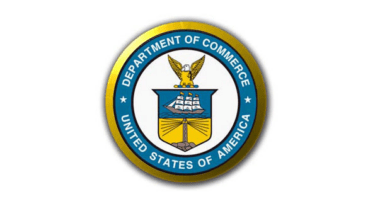By: Adrienne Braumiller, Founding Partner
On June 22nd, the U.S. Commerce Department Bureau of Industry and Security (BIS) promulgated its final version of the revision of enforcement guidelines (effective July 22, 2016). BIS proposed its initial revisions in December 2015. Concerns regarding the proposed revisions included the proposed base penalty amounts, mitigation factors, related violations, warning letters, and the treatment of Voluntary Self Disclosures (VSD). BIS received comments from 11 submitters and resolved most of the concerns in the final version.
The good news is that VSDs continue to be a key tool in an exporter’s arsenal to significantly mitigate its risk for export penalties.
Initially, commenters were concerned that the proposed revision fixed the base penalty amount for egregious cases resulting from a VSD to one-half the statutory maximum. The BIS Office of Export Enforcement (OEE) agreed that the “formula stated in the proposed rule may have been too rigid” and revised the proposed rule to “a range of up to one-half the statutory maximum.” Commenters likewise objected to the initial proposed revision for egregious cases not resulting from a VSD. The OEE again agreed to revise the final rule to a range just near the statutory maximum, rather than the initial rule, which set the applicable statutory maximum as the base penalty.
The final rule also revises the sections on Mitigating Factors. Based on comments received, the OEE revised Mitigating Factor G to include the question:
Has the Respondent previously made substantial voluntary efforts to provide information (such as providing tips that led to enforcement actions against other parties) to federal law enforcement authorities in support of the enforcement of U.S. export control regulations?
This particular mitigating factor while fairly unsettling memorializes a long standing strategy of pointing the finger at other potential parties to help the disclosing party shift some or most of the blame.
OEE also revised Mitigating Factor H to include a practical question: “Would the export have qualified for a license exception?” If so, the thinking is that there is less harm from the underlying violation.
Another concern from commenters was BIS’s treatment of cases involving multiple violations. The proposed revisions deleted language that distinguishes whether multiple violations “stem from the same underlying error or omission”, thus violations that would currently be viewed as “related” would have been considered “unrelated”. BIS agreed to the concerns and revised the final rules to state: “OEE will consider whether the violations stemmed from the same underlying error or omission, and whether they resulted in distinguished or separate harm.”
An additional concern regarded the proposed changes to the issuance of warning letters. The proposed revisions would have allowed for the issuance of a warning letter if “OEE determines that a violation may have occurred.” Commenters felt that this could have resulted in the issuance of a letter where no violation had occurred. This caused concern because the proposed revisions also allowed for up to a 25% reduction in penalties for a first violation. Receipt of a warning letter would have precluded a violation from being considered a “first violation”. In the final rule, the OEE clarified that it “would not issue a warning letter based on its conclusion that a violation did not occur” and revised the first offense mitigation “to be determined without regard to the prior issuance of warning letters.”
Finally, the proposed rules would have imposed a 75% limitation on mitigation of non-egregious cases based on a VSD submission, and a VSD submission would only affect the civil penalty base amount. This caused anxiety as currently the submission of VSDs for non-egregious cases often results in the complete avoidance of civil penalties. Commenters voiced their worry that this would significantly reduce “the incentive for voluntary disclosure.” BIS agreed and revised the final rule to clarify that it intends to continue its practice of a “very low percentage of VSDs” resulting in civil monetary penalties. BIS further clarified that the rule would formalize standing OEE practice of assigning 50% mitigation for “the submission and completion of VSDs that meet the requirement of § 764.5” and that the “proposed rule would remove the discretion to assign anything less,” thus further incentivizing VSD submission. The final rule retains the 75% limitation on mitigation for egregious cases based on a VSD.
BIS considered commenters concerns seriously and incorporated many of the suggested revisions into the final rules. However, in a few instances, BIS concluded that the comments did not merit revision of the proposed rule. Importantly, a high degree of cooperation is still required for BIS to consider cooperation a mitigating factor. Companies are encouraged to review the final version of the Guidance on Charging and Penalty Determinations in Settlement of Administrative Enforcement Cases.

























